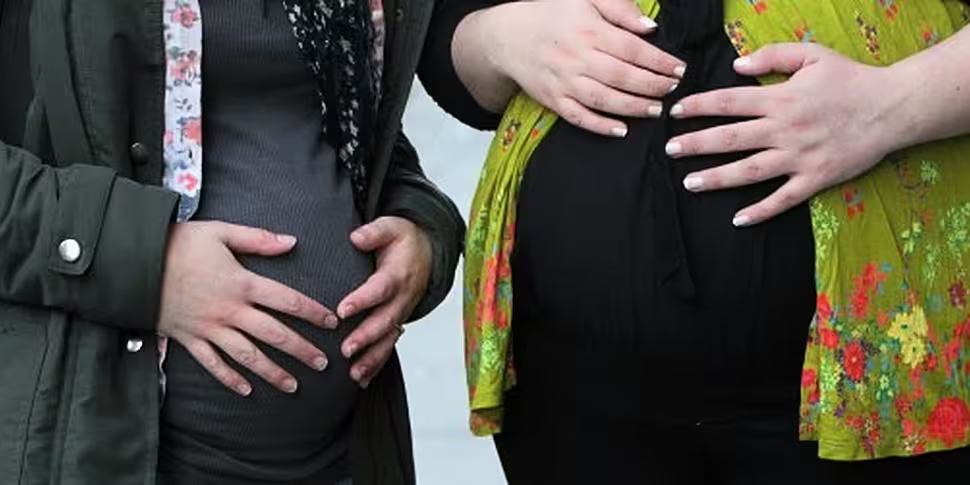A Dublin conference is being told about the increasing rates of caesarean sections in Ireland, and the decline of natural births.
The c-section rate here was 24.6% in 2014, and rose to 32.3% in 2015 for women having their first baby.
The caesarean rate in women having their second or subsequent baby is also high at 30%.
The World Health Organisation (WHO) say the "ideal rate" for caesareans is between 10% and 15%.
It also says that due to their increased cost, high rates of unnecessary caesarean sections can pull resources away from other services in overloaded and weak health systems.
It follows a recent European study called OptiBIRTH, which was carried out across a number of maternity hospitals in Ireland, the UK, Sweden, Finland, the Netherlands, Belgium, Germany and Italy.
It found that rates of c-sections varied hugely across the region with Ireland having the third-highest rates in the countries studied.
They also found that there had been very little research carried out on women-centred support or information programmes to help women achieve a natural birth after a previous caesarean section.
Source: U.S. National Library of Medicine
The study's authors believe there is "an urgent need" to develop women-centred interventions for improving rates of natural birth after a caesarean section.
They have developed a support and information programme for pregnant women and healthcare providers - including midwives and obstetricians.
The programme has been tested in 15 hospitals across Ireland, Germany and Italy, with mixed results.
The Italian hospitals that used the programme were able to increase their vaginal birth after a caesarean (VBAC) rates from 8% to 22%.
But a recent ESRI study looking at VBAC rates in two Dublin hospitals showed that the rate actually decreased from a high over the period of 64.4% in 1990 to its lowest rate of 32.9% in 2014.
Professor Ray O'Sullivan is a consultant obstetrician and gynecologist at St Luke's Hospital in Kilkenny.
He told the Pat Kenny Show there is no one reason for this upsurge.
"We see things now like ageing mothers - so the average age of a first time Irish mother is 32, that's not usual.
"We also see women gaining weight and they're a bit heavier than they used to be, so obesity is an issue.
"So these factors all come into play when we start talking about caesarean section and why they're rising".
"I suppose we've also got the fact that in Ireland we do have one of the lowest numbers of obstetricians per 100,000 women in the OECD, we're seeing the numbers of midwives...to birth drop."
"Also I suppose there's fear - fear on the part of women.
"Women themselves don't feel confident anymore in what their bodies can do because of what the media have portrayed in the last number of years with respect to obstetrics in this country.
"Ireland is still one of the safest places in the world to have a baby, despite what might have happened in hospitals around the country...but I think confidence is lost".
Professor Cecily Begley is coordinator of OptiBIRTH and chair of the School of Nursing and Midwifery at Trinity College Dublin.
She explains: "The OptiBIRTH study showed clearly that women who understood the risks and benefits of both caesarean section and VBAC were strongly motivated to plan a natural birth.
"Change took time here in Ireland, and clinicians now need to take this cost-effective and safe support and information programme on board and work with women to reduce unnecessary caesarean sections into the future.
"The findings showed that women who took part in the study were better able to influence their chances of a natural birth.
"Harmful to women"
Explaining the implications of the rise in caesarean sections, NUIG Midwifery Professor Declan Devane said: "The rising caesarean section rates and falling VBAC rates lead to unnecessary caesarean sections, which are harmful to women and babies and increase health service costs.
"Caesarean section can be life-saving but, overall, this operation leads to higher maternal death and postnatal problems.
"The risk of death for babies born naturally after previous CS is higher than for those born by repeat CS, but it is the same low level of risk that all first-born babies face."
A WHO report from 2010 found that a total of 54 countries had C-section rates below 10%, whereas 69 showed rates above 15%.
Fourteen countries had rates between 10 and 15%.
"We estimated that in 2008, 3.18 million additional CS (caesarean sections) were needed and 6.20 million unnecessary sections were performed", it found.
While a report from the US National Library of Medicine states: "The use of CS worldwide has increased to unprecedented levels although the gap between higher - and lower-resource settings remains."










